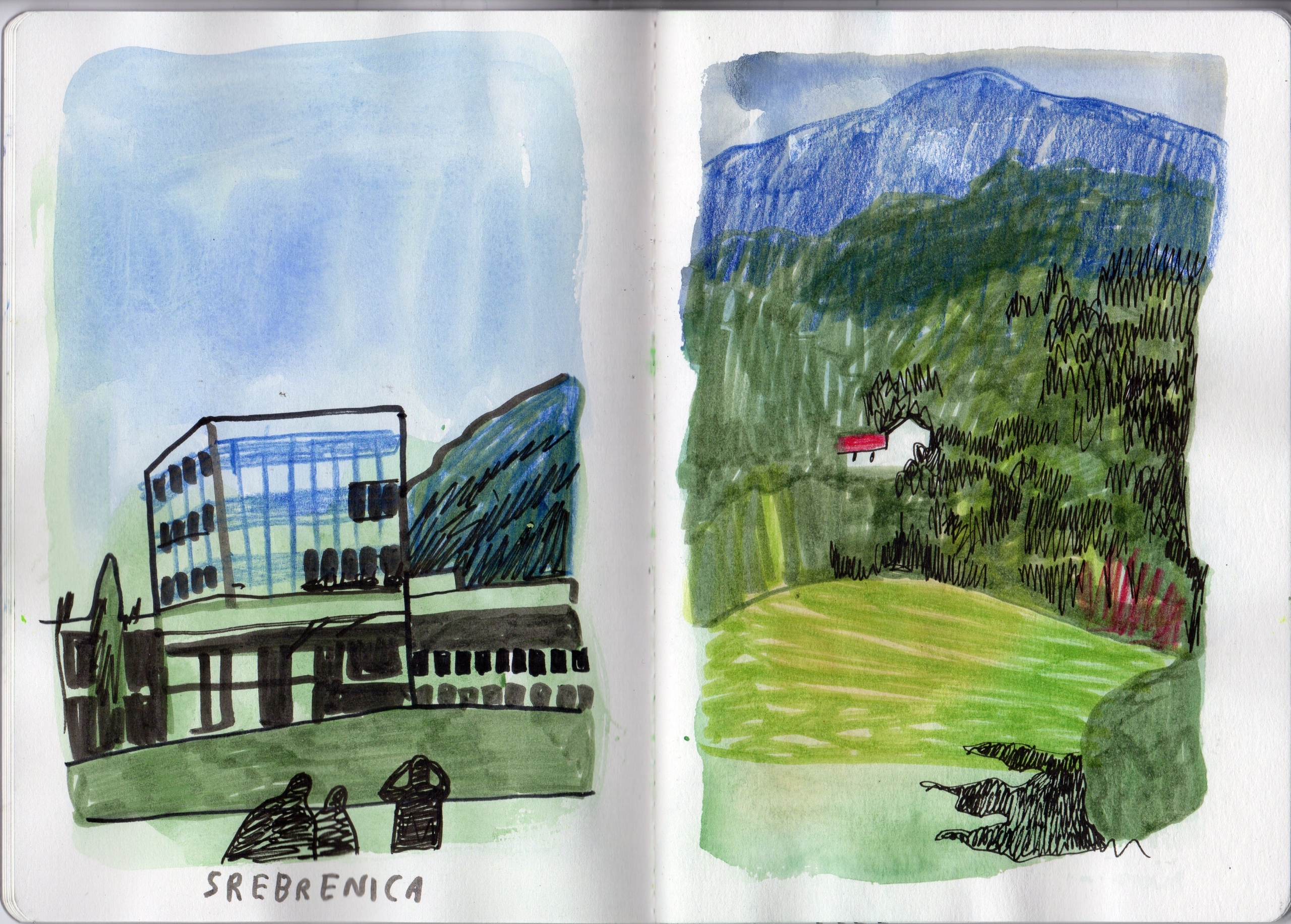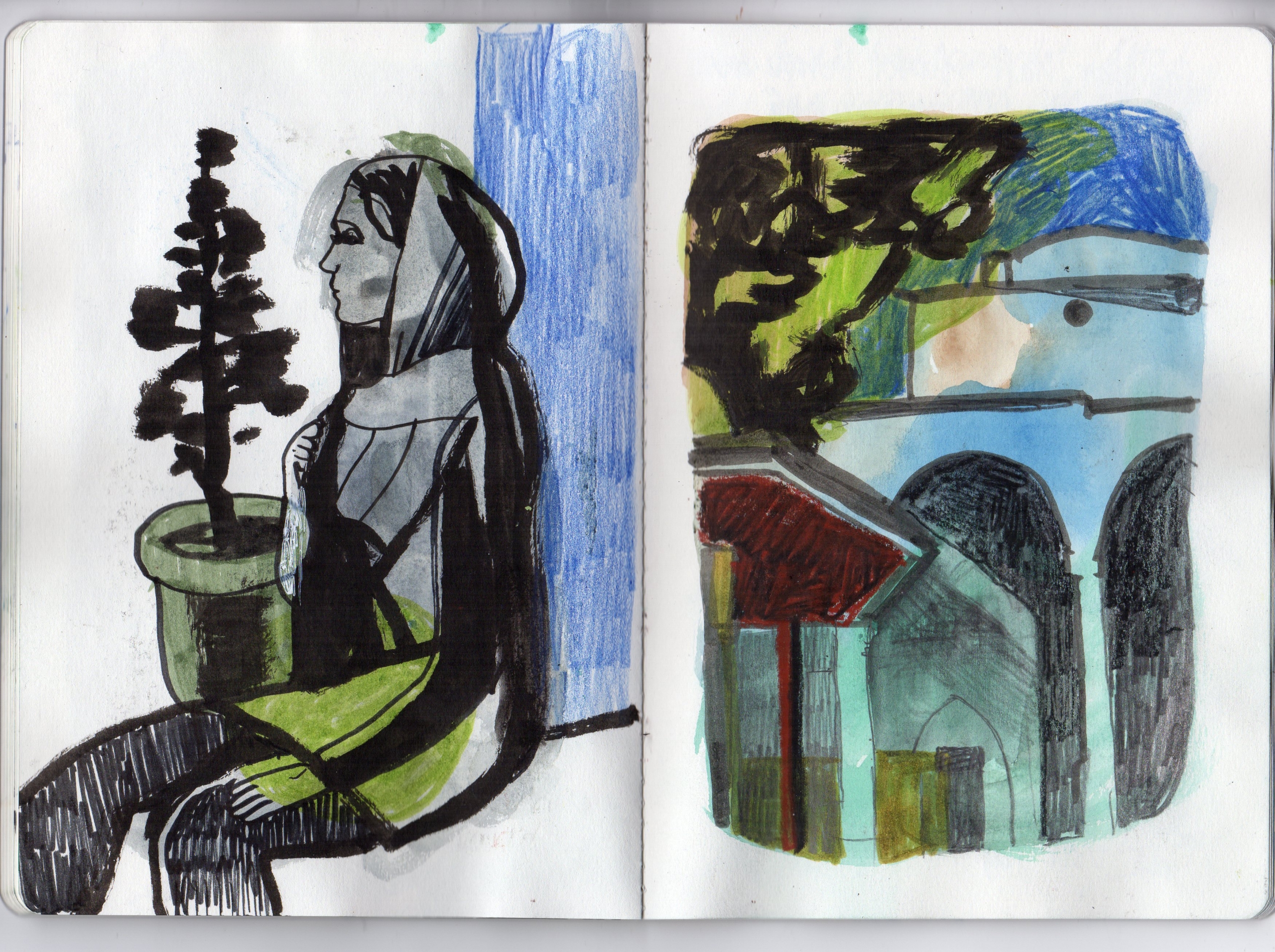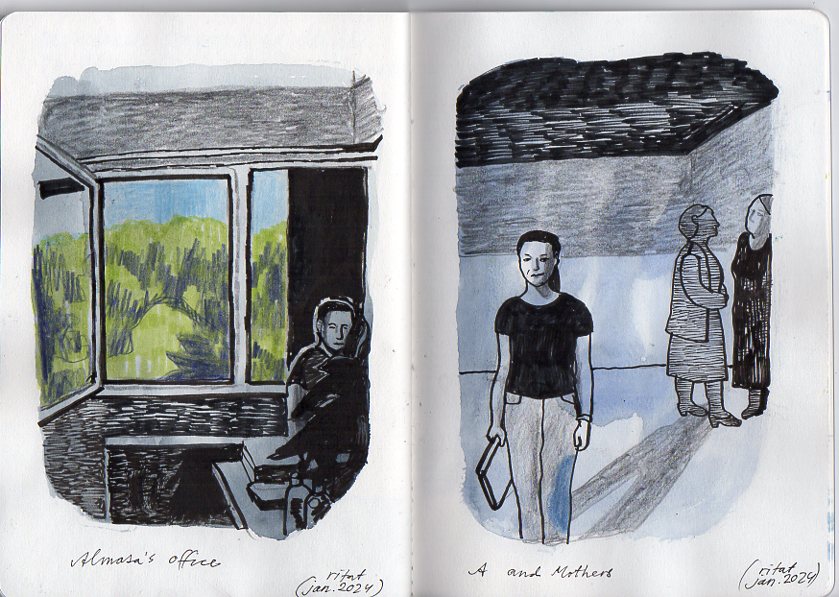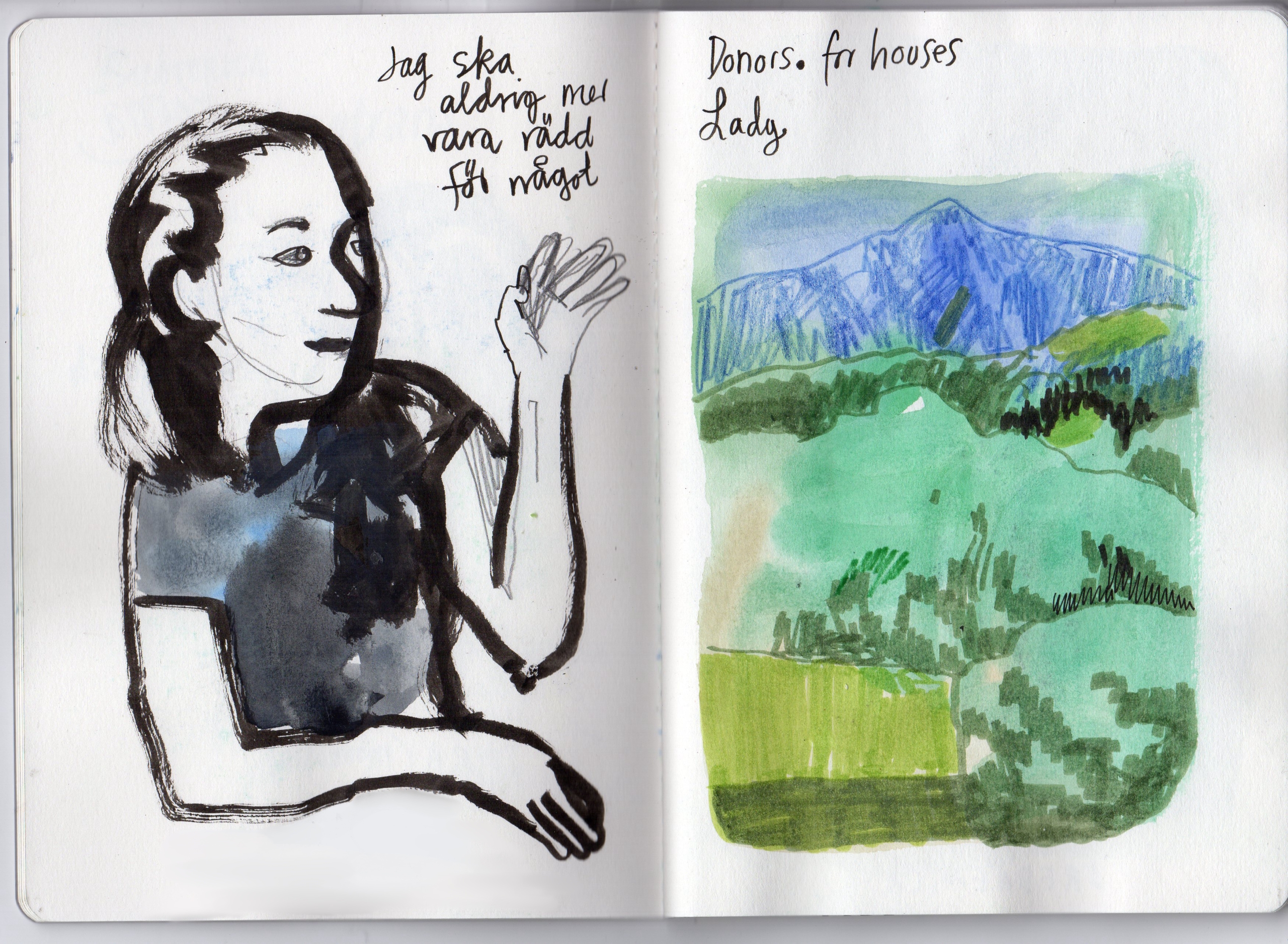Yugoslav Wars




Field sketches by Anneli Furmark.
The violent dissolution of Yugoslavia in 1990 instigated wars in Slovenia, Croatia, Bosnia and Herzegovina, and Kosovo. The violence in Srebrenica in 1995 brought genocide back to Europe, and from that time, remembrance of the wars has been divided. The Yugoslav Wars Research Cluster will interrogate state-sponsored histories of these conflicts and their commemorative practices, focusing on how gender-based experiences violence have been erased from the narrative. This research cluster will create two graphic narratives, accounting for how gender-based violence is remembered both publicly and privately.
The following content contains more detailed historical context explaining the dissolution of Yugoslavia and the resulting violence. While this context is important to understanding the experiences of the survivors working with this cluster, it contains references to violence, including sexualized violence, that may be challenging for some readers. Please proceed with discretion.
Dissolution of Yugoslavia (1991-2001)
At the beginning of the 1990s, the Socialist Federal Republic of Yugoslavia was a non-aligned federation comprised of six republics: Bosnia and Herzegovina, Croatia, Macedonia, Montenegro, Serbia and Slovenia. In addition, the two regions of Kosovo and Vojvodina held the status of autonomous provinces within the Republic of Serbia. Besides ethnicity, religion was an identity marker, with Orthodoxy, Catholicism and Islam being the main religions. Coinciding with the collapse of communism and resurgent nationalism elsewhere in Eastern and Southeastern Europe, Yugoslavia experienced an intense political and economic crisis. The central government in Belgrade weakened while militant nationalism grew. The scale of political advocacy oscillated between quests for independence and a re-balancing of powers within the federation. The latter option was destroyed as political leaders fuelled fear and mistrust among Yugoslavia’s ethnic groups and started war-mongering. The result was a series of violent conflicts and wars that marked the break-up of the country: 1991 in Slovenia; 1991-1995 in Croatia; 1992-1995 in Bosnia-Herzegovina, 1998-1999 in Kosovo, and 2001 in Macedonia.
Bosnia and Herzegovina
The following information contains references to sexual assault. Please take care of yourself when engaging with this content.
The deadliest among the conflicts in the disintegrating Yugoslav Federation occurred in Bosnia and Herzegovina. It is estimated that more than 100,000 people were killed and two million people, more than half the population, were forced to flee their homes. Thousands of Bosnian women were systematically raped. All conflicting sides set up notorious detention centres for civilians. Mass killings happened throughout the war in various locations. The single worst atrocity occurred in 1995 when the town of Srebrenica, a UN-declared safe area, came under attack by forces led by the Bosnian Serb commander Ratko Mladić. During a few days in July, more than 8,000 Bosnian Muslim men and boys were executed by Serb forces in an act of genocide. The rest of the town’s women and children were driven out. This was the first genocidal violence in Europe since the Holocaust. In November 1995, a peace deal was initialled in Dayton/Ohio, creating the complex, fragile, ethnicity-based present Bosnian-Herzegovinian statehood.
Kosovo
In Kosovo, ethnic Albanians sought to increase their independence from Serbia. The province’s autonomy had been revoked with a sleight of hand in 1989 by Serbian president Slobodan Milošević, triggering the establishment of Albanian “shadow” institutions (schools, hospitals, tribunals, associations, political parties etc.). This was accompanied by a perpetuated flow of Albanian refugees leaving the Yugoslav rump state. In 1998, the simmering violence flared as the Kosovo Liberation Army (KLA) came out in open rebellion against Serbian rule, and police and army reinforcements were sent in to crush the insurgents. These forces heavily targeted civilians, shelling villages and forcing many more Kosovo Albanians to flee. As the attempt at an internationally-brokered deal to end the crisis failed in early 1999 at the Rambouillet peace talks, NATO carried out a 78-day-long campaign of air strikes against targets in Kosovo and Serbia. In response, Serb forces further intensified the persecution of the Kosovo Albanian civilians. Ultimately, Serbian president Milošević agreed to withdraw his troops and police from the province. Some 750,000 Albanian refugees came home and about 100,000 Serbs – roughly half the province’s Serb population – fled in fear of reprisals. In June 1999, Serbia agreed to the international administration of Kosovo, a status that ended in February 2008 with Kosovo unilaterally declaring independence from Serbia. Today, Kosovo’s fragile statehood has been recognized by 115 of the 193 member states of the UN.
Roma Populations in Yugoslavia
The following information contains references to sexual assault. Please take care of yourself when engaging with this content.
A victim group that has never been acknowledged are Yugoslavia’s Roma. Their situation worsened with the end of socialism and the outbreak of war, as they were seen as disloyal by all warring parties and were swept into the maelstrom of the violence without ever being a warring party. As a result of the wars in the former Yugoslavia, tens of thousands of Roma from Bosnia and Herzegovina, Macedonia, Serbia, Vojvodina and Kosovo were forced to leave their homes. In Bosnia and Herzegovina, hundreds of Roma were killed, but Roma were never recognized as victims of the war. Tens of thousands of Bosnian Roma fled to Western Europe. Roma were particularly affected also during the second wave of violence, in Kosovo. According to estimates, more than 100,000 Roma were forced to leave during and after the conflict in 1999. Up to 40,000--50,000 of them fled to Serbia, others to Western Europe and elsewhere. Serbia’s staunch nationalists, however, hated the Roma. Both those who had resided here for a long time and those arriving as a consequence of the wars were threatened; they were raped and killed – and forced to leave.
